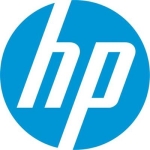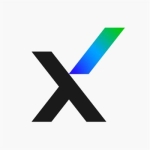What is our primary use case?
We use it for our endpoints. It is installed on all of our servers and desktops. It is a replacement for the AV platforms that we used to have.
Overall, the product monitors what is happening on your machines. It monitors incoming mail and web addresses that your browsers are trying to access. It looks for suspicious activity that may occur on your desktop or on your server and generates alerts based on the type of activity. It might find a malicious file that you downloaded. Like a virus scanner, it would scan something. It might find something that it suspects to be malicious. It will look at that item and go to its own threat intelligence sources to see if it is a known threat. If it is a known threat, it will either block it or do something to it based on how you have pre-configured it. If it suspects something to be a threat but does not have any reference, meaning that it is an unknown threat, then depending on what it detects or how that thing may behave, it would either alert you or suppress or isolate it. It can do a number of things. It depends on the inner workings of the product itself, but our use cases are to protect our endpoints. It is a replacement for our AV, but it is a whole level above what AV used to be. It is the evolution of AV.
How has it helped my organization?
We had three different AV platforms in our organization. There was no central way to manage them. We had no complete visibility. From one part of our organization, we had no visibility into another part of our organization. By putting this platform in, we now have one view of the entire organization. We can look at threats as they span our organization. Threats could potentially be moving around. We can detect if they are spreading to other parts. We could not do any of that before.
Singularity Complete has a much better detection engine. It detects a lot more than an AV can. AV is pretty much finished. There would not be AV anymore.
In terms of interoperability, we do not have any other SentinelOne solution. This was our first one. There is not a lot of interoperability between endpoints and everything else. The only interoperability that is useful for us right now is the log data that it provides to our SIEM. It allows us to do correlative analysis between different areas. If we have a threat that could be going from endpoints to internet devices, such as switches, or places where the EDR system is not installed, it becomes valuable when we are sharing data from the EDR and our other systems, and we have a tool that analyzes all that data to look for threats that may span in our entire environment. I do not see the interoperability being a problem with our other tools, and I am sure it would not be an issue amongst SentinelOne's own tools as well, but I do not have any data points on that yet.
Singularity Complete has helped big time to reduce our alerts. In fact, that was my concern with it. I was concerned that we are not seeing too many alerts anymore. I had a meeting with them recently, and I mentioned to them that I feel that we should be getting more alerts. They are going to take a look at our platform to make sure it is working fine, but it seems to be doing a great job of dealing with the alerts in an automated fashion. I became a little bit suspicious that it might be doing too good of a job, so we are just having them double-check. It is just me making sure all my I's are dotted, and my T's are crossed. As a security person, I do not like to have questions out there, but otherwise, it is doing a great job.
It has freed up our time. It takes a lot less time to investigate things. It takes care of a lot of things for us. It has offloaded 30% to 50% of some of the work that we had to do in the past. It allowed us to work and focus more on higher-priority items.
It has absolutely reduced the mean time to detect. It has probably reduced the time to detect by 75% because we just did not have some of these capabilities before.
Singularity Complete has also reduced our mean time to respond but not as much as the mean time to detect. It does a lot of resolution of issues for us. It has probably improved that by 30% to 50% because it does a lot of that automatically, but it frees up our time. We can resolve the stuff that needs our personal assistance a lot quicker because we have more tools and capabilities at our disposal through SentinelOne than we had before.
Singularity Complete has saved us costs big time. We have eliminated three different vendors and the associated maintenance of those platforms. We needed more people and resources to manage three different things, but now, we do everything with just a couple of folks. Our time savings are about 50%.
It has helped reduce our organizational risk because we can detect more things that are hitting us. I cannot give a number on that, but it has definitely reduced our risk exposure. From a pure security standpoint, our risk frame point used to be flagged as red. We were missing a lot of things, and now, it is green.
What is most valuable?
The single pane of glass is probably the most valuable. That is a big one. We could see everything from one view.
The automatic detection and response is great. It takes care of a lot of alerts that it generates before they even cross our desks, which is great.
It has advanced detection capabilities. It has the ability to go and look for known threats that are in the environment. Its ability to detect even unknown threats and any suspicious activity is great. We are very happy with it.
What needs improvement?
It is not so much on the Singularity platform itself, but they have their own built-in SIEM that is included with it. That needs to evolve a little bit. It is relatively basic in its capabilities. They have potential there for a great product and a needed product too. Having some kind of SIEM capability with the endpoint solution will save me from buying a bigger SIEM or buying another one. I could just use the one that comes with my endpoint solution.
From the looks of it, it does pretty much what we need, but it could do more. It would be nice if it had some newer features that other players have. They would have a good market advantage if they were offering SIEM as a part of it. They kind of do that, but it is not something they are promoting. We just stumbled on it, so you can use it for doing other things as well, not just endpoint incident and event collection.
For how long have I used the solution?
We installed it in January, and we were doing a gradual ramp-up over three months. It has been up and running for about four months now. It is completely up and running.
What do I think about the stability of the solution?
We have not had any issues. The performance seems good.
What do I think about the scalability of the solution?
It seems very scalable. We have not run into any issues. We pushed it over about 2,000 endpoints. It performs the exact same way it has been.
How are customer service and support?
I have not personally contacted them, but my team has contacted them. Especially during deployment, they were very helpful. They helped us to get it done. The feedback I got was positive.
Which solution did I use previously and why did I switch?
We had three different AV platforms. We eliminated McAfee, Defender, and ESET. Singularity Complete does everything better than these because it has got capabilities that these products did not even have. The biggest thing for us is the single pane of glass, so we can see right down to the machine. It is great at machine isolation, and it has better detection and mitigation capabilities than any of these products. It does a lot of it behind the scenes. A lot of it is automated and does not require us to do anything.
How was the initial setup?
It is a cloud solution with local installs at the endpoints, so everything is cloud.
I manage security for the organization. I was not doing the deployment, but I was a part of the deployment team, the meetings, and the decisions when we were going to do different things. I was not pushing the software to anybody's desktop but my team was.
It was not a difficult installation. Based on the feedback that we got, it was pretty straightforward. It went over relatively smoothly.
It does not require any maintenance. It is cloud-based, so we do not have to do much to it. The endpoints will update themselves periodically, so there is not much for us from a maintenance standpoint. It does not have a lot for us to do.
What about the implementation team?
We acquired our SentinelOne implementation through a reseller. We used the reseller's help, but we did almost 90% of it ourselves. They helped us manage the project piece and provided expertise and guidance. Between SentinelOne and the vendor itself, we got it done, but we did 90% of the heavy lifting.
There were probably four or five people between all of our locations, but most of it was done remotely. There was no need to touch individual desktops. We were able to push most of it out.
What's my experience with pricing, setup cost, and licensing?
SentinelOne was half the price of CrowdStrike.
Which other solutions did I evaluate?
We looked at all the big ones, such as CrowdStrike. That is the first one that comes to mind. We even looked at Microsoft Defender and Sentinel. We looked at a few other solutions out there. We had an IBM demo there, but I do not remember what theirs was called. Bitdefender was another one that we looked at.
We went to Singularity Complete for the feature set. They did not have a robust feature set the way CrowdStrike does, but they had everything that we needed. CrowdStrike had even more advanced features, but SentinelOne's pricing was half of what CrowdStrike sells for. It was a pretty easy decision for us to go with SentinelOne. They were much better than the other players that we looked at. It came down to between SentinelOne and CrowdStrike, and the pricing made all the difference. They also seemed pretty easy to deal with, whereas with CrowdStrike, it felt like they were doing us a favor. When we talked to them, I just did not get a great sense of them, but price was one of the main things. CrowdStrike's price was double of SentinelOne's price.
What other advice do I have?
I would advise a couple of things. If you are using a reseller to buy this and install it for you, have a good reseller that you can call upon for support and help manage the project. The other thing that I would probably suggest is to negotiate your education up front and not after the fact. It does not come with a lot of training. They even charge for the online university, so you should probably negotiate that as a part of the negotiation process before you sign a deal. Other than that, it is good.
I would rate Singularity Complete a nine out of ten. For my use case, it is definitely a nine.
Disclosure: PeerSpot contacted the reviewer to collect the review and to validate authenticity. The reviewer was referred by the vendor, but the review is not subject to editing or approval by the vendor.





















